Besides the general track, the following special sessions are organized at IOMAC 2025:
S1 – Diagnosis of rotating machinery more info
S2 – Monitoring for railway infrastructure: technologies and methods more info
S3 – Advances in modal analysis for aeronautical and space systems more info
S4 – Dynamic identification and long-term modal-based monitoring of bridges more info
S5 – Optical methods for structural identification and monitoring more info
S6 – OMA for digital twins more info
S7 – Bayesian approaches for engineering dynamics more info
S8 – Modeling and computational methods for physical model-based identification more info
S9 – Physics-enhanced learning for structural health monitoring tasks more info
S10 – Vibration-based assessment and monitoring for wind energy structures more info
S11 – Bayesian filters for identification and infrastructure monitoring more info
Industrial Session: Innovative Software and Hardware Solutions more info *please contact program@iomac2025.com for participation to this session*
S1 – Diagnosis of rotating machinery
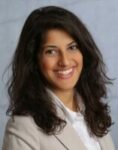 Mona Amer The University of British Columbia, Canada |  Dmitri Tcherniak HBK – Hottinger Brüel & Kjær, Denmark |
The modal identification of rotating machinery in operation still represents a challenge due to various reasons. The rotation superimposes the stochastic ambient excitation and harms the identification process if not properly identified. The so-called harmonics can also result from auxiliary units of big rotating machinery. The complicated geometry of rotating machines can further lead to difficulties in the interpretation of mode shapes, especially when a small number of conventional sensors is involved. Further, changing load conditions and other influences such as friction can lead to operating point dependent behavior of modal parameters, which does not allow a unique identification and rather requires to study the dynamic behavior at all relevant operating points.
Modal parameters represent ideal characteristics to assess the structural health of a system and to be tracked over time to conclude necessary maintenance before machine failure occurs. A reliable identification of these parameters is thus essential. The derived dynamic models can then represent a crucial part of digital twins gaining more and more popularity amongst researchers and operators. The provided real-time information of the machines can facilitate immediate intervention in the operating behavior. So far, most development of suitable techniques for the reliable modal identification of rotating machinery is performed on simple analytical or numerical examples and is tested on structures under laboratory conditions. There are still few use cases of real operating rotating machinery dealing with the aforementioned topics and problems found in the literature. This special session aims at changing the current state of the art in presenting and discussing real world examples, where new techniques are developed or previously elaborated methods coming from simple examples are applied to complex structures. Innovative testing techniques such as video-based methods to facilitate the data acquisition in operation and the interpretation of results represent another field of interest. The outcome and discussions should contribute to the expansion of Operational Modal Analysis in the field of rotating machinery. Making Operational Modal Analysis more accessible in the rotating machinery areas, will make this technique a bigger part of the digital twin development, which are necessary for sustainable and resilient machine operation in the future.
Keywords: Rotating machinery, Rotation-synchronous vibrations, Harmonic identification & removal, Turbomachinery, Innovative testing techniques, Operating point dependent behavior, Structural health monitoring, Digital twins
S2 – Monitoring for railway infrastructure: technologies and methods
 Charikleia Stoura ETH Zürich, Switzerland |  Eleni Chatzi ETH Zürich, Switzerland |  Paolo Chiariotti Politecnico di Milano, Italy | 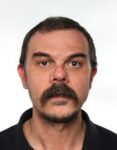 Vasilis Dertimanis ETH Zürich, Switzerland |
Railway infrastructure is vital to the safe and efficient transportation of people and goods. Effective monitoring systems are critical for ensuring the reliability, safety, and longevity of railway networks. To achieve this, a wide range of tools can be used to monitor both infrastructure elements—such as bridges, tracks, sleepers, and critical components like joints and switches—as well as rail vehicle fleets.
This special session focuses on key technologies and methods for monitoring railway infrastructure, emphasizing their role in predictive maintenance, damage detection, and system optimization. It invites contributions on topics related to system identification methods, vibration-based structural health monitoring (SHM) algorithms for structures and vehicles, and both direct (e.g., permanently deployed sensing solutions) and indirect (e.g., on-vehicle sensing solutions) monitoring methods. Additionally, it seeks to explore new technologies for data collection and analysis, AI-based approaches, and their relevant applications in railways.
Topics of interest include, but are not limited to, operational modal analysis (OMA), system identification schemes, and theoretical and experimental methods for on-vehicle monitoring. Contributions on statistical system identification methods for parameter, state, and load estimation using physics-based or black-box models are also encouraged. Stochastic simulation techniques for state estimation and model class selection, fault and anomaly detection methods, optimal strategies for experimental design, and techniques for optimal sensor and actuator placement are equally relevant. Furthermore, structural prognosis techniques and methods for updating response and reliability predictions using data are welcomed. Other topics of interest encompass advancements on cutting-edge monitoring and inspection technologies that rely on wireless sensors, ground-penetrating radar (GPR), inertial measurement units (IMUs), laser-based systems, and drones with high-resolution cameras. Papers focusing on experimental or field investigations, as well as verification of theories specific to railway infrastructure monitoring, are especially encouraged for submission.
Keywords: Railway Infrastructure, Structural Health Monitoring, System Identification, Operational Modal Analysis, Sensing Technologies
S3 – Advances in modal analysis for aeronautical and space systems
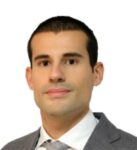 Marco Civera Politecnico di Torino, Italy |  Gabriele Dessena Universidad Carlos III de Madrid, Spain |
Modal analysis remains a cornerstone of structural dynamics, playing an essential role in designing, testing, and monitoring aerospace structures. In the rapidly evolving sectors of aeronautics and space, the increasing complexity of structures and the demand for enhanced safety, performance, and reliability call for continuous advancement in these techniques.
This session will cover recent developments and innovative applications of Experimental (EMA) and Operational Modal Analysis (OMA) for aerospace systems. Contents of interest include, but are not limited to:
- Recent innovations in automated approaches for modal analysis, offering improvements in the identification of modal parameters for large, complex systems such as aircraft components and space structures. Applications or advancements in Automatic OMA aimed at aerospace systems are particularly welcomed.
- Applications to aeronautical and space systems, including case studies demonstrating how advancements in modal analysis contribute to enhanced Structural Health Monitoring, real-time diagnostics, predictive maintenance of aerospace vehicles, and/or their characterization in general.
- Inter-disciplinary developments, such as the increasing role of data-driven techniques and artificial intelligence in improving the efficiency and accuracy of modal analysis in both aeronautics and astronautics.
Experimental investigations, numerical studies, bibliographic reviews, and other contributions highlighting the role of SHM and NDT in the field are all welcome. By focusing on both theoretical advancements and practical implementations, this session aims to engage a diverse audience, from industry professionals involved in the maintenance of aircraft and spacecraft, to academic researchers exploring new methodologies for structural health monitoring and modal parameter identification.
Keywords: Aeronautical structures, Space structures, Structural Health Monitoring, Experimental Modal Analysis, Operational Modal Analysis
S4 – Dynamic identification and long-term modal-based monitoring of bridges
 Carlo Rainieri CNR, Naples, Italy |  Carmelo Gentile Politecnico di Milano, Italy |  Ilenia Rosati CNR, Naples, Italy |  Paolo Borlenghi Politecnico di Milano, Italy |
Structural assessment and monitoring of bridges are critical to ensure their safety and prevent down-time. In this context, Operational Modal Analysis (OMA) and modal-based Structural Health Monitoring (SHM) are gaining relevance as tools for ensuring the integrity, safety, and longevity of bridges. Recent codes also recognize such a role, promoting the wide application of such techniques. The present session aims at collecting novel contributions about applications of OMA and modal-based SHM to bridges.
Suitable topics include, but are not limited to:
- Optimal sensor placement techniques,
- Development of new damage indicators,
- Data normalization techniques to filter out environmental and operational effects on modal properties,
- Vibration-based tuning of Finite Element models for structural identification,
- Machine learning for data-driven SHM,
- Development of data-enhanced digital twins, to replicate the structural behavior under varying environmental and operational conditions, support the interpretation of monitoring data, and simulate scenarios aimed at optimizing maintenance and intervention strategies.
Keywords: Bridges, structural identification, structural health monitoring, machine learning, digital twin
S5 – Optical methods for structural identification and monitoring
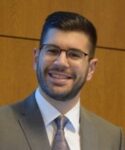 Dimitrios Anastasopoulos KU Leuven, Belgium | 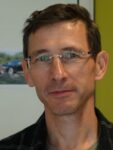 Vincent Baltazart Université Gustave Eiffel, France |  Edwin Reynders KU Leuven, Belgium |  Janko Slavič University of Ljubljana, Slovenia |
A wide range of optical sensing methods are finding their way to dynamic structural analysis and monitoring. They include methods based on sensing in the visible spectrum such as computer vision and image correlation methods, methods in the infrared spectrum e.g. based on the thermo-elastic effect, and fiber-optic strain sensing techniques based on e.g. Bragg or Rayleigh scattering. These optical methods open up new possibilities in operational modal analysis and structural health monitoring thanks to e.g. a very dense spatial resolution or a low instrumentation cost. This special session would like to highlight recent progress in this promising research area, including – but not limited to – analysis techniques for video and thermal image data, image processing methods for motion extraction and for large-scale video data, techniques for signal amplification of fiber-optic and video data, structural feature extraction from optical sensing data, and technical applications and benchmarks.
Keywords: Image-based techniques, thermo-elastic effects, fiber-optic strain sensing
S6 – OMA for digital twins
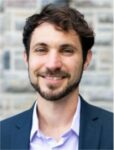 Rodrigo Sarlo Virginia Tech, USA |  Alexander Mendler Technical University of Munich, Germany |
In the past few years, Digital Twin (DT) has become a popular term for the real-time fusion of sensor data and digital models. Nevertheless, the structural dynamics community is still converging on suitable definitions and applications of DTs. This session presents an opportunity to discuss both fundamental frameworks and applications for structural dynamics DTs and how Operational Modal Analysis (OMA) fits within these. OMA has historically been an important tool for model updating/calibration, which itself is a building block of the DT concept. There are, however, other important building blocks, including: geometry capture and model conversion, data-driven modelling and model reduction, uncertainty quantification, prognosis & decision support, visualization, and others. We welcome papers submissions discussion one or more of these building blocks in relation to OMA and DTs. Possible topics include, but are not limited to:
- Experimental demonstrations of the use of structural dynamics data to make asset management decisions.
- Fundamental frameworks for “closing the loop” between operational vibration data and decisions.
- Techniques for propagating data uncertainty to modeling predictions.
- Model reduction and/or surrogate modeling for improved model updating
- Impact of modeling errors on the quality of model parameter estimation.
- Data-driven techniques for the prediction of dynamic behavior based on operational data.
- Dealing with non-linear behavior in the application of OMA to model updating.
- Visualization techniques for operational structural dynamics data.
- Discussion of the advantages and/or limitations of OMA in DT applications.
Keywords: Model Updating, Data-driven Modeling, Data Fusion, Reality Capture, Uncertainty, Decision Support
S7 – Bayesian approaches for engineering dynamics
 Timothy Rogers University of Sheffield, UK | 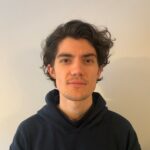 Lawrence Bull University of Glasgow, UK |  Aidan Hughes University of Sheffield, UK |
Engineers are acutely aware that there exist many sources of uncertainty in our modelling and analysis, this is especially true in the case of dynamic systems where this uncertainty can be significant. One important example is in the monitoring and identification of those systems, where large scale civil infrastructure is a salient and representative example. Lacking information, specifically regarding the loading of the system in the case of OMA problems, can cause higher degrees of uncertainty about the modal properties in comparison to the controlled input case. As the results of these analyses are used for further engineering decision making (e.g. inspection and maintenance), quantification of the uncertainty becomes even more important. The Bayesian framework for quantifying uncertainty has several appealing qualities in an engineering setting: it allows for the inclusion of prior knowledge (e.g. regarding physical constraints on certain quantities) and it provides a picture of the complete uncertainty about a variable of interest, which is invaluable in risk-based decision making. However, these methods are not without their limitations and hence research is of ongoing interest. To name a few open challenges: It can be challenging to accurately quantify the prior knowledge of an engineer in the form required for analysis. There is often a much higher computational burden associated with the solutions of Bayesian methods as opposed to, for example, their maximum likelihood counterparts. Finally, although they can provide a richer picture of uncertainty in a problem, it is not always clear how use of this can be made downstream. In view of the range of interesting open problems in this area, this special session welcomes proposals on topics related to the use of Bayesian methods in engineering dynamics which may include:
- Bayesian system identification, including Bayesian methods for operational modal analysis
- Comparison between Bayesian identification and non-Bayesian alternatives
- Bayesian algorithms for structural health monitoring
- Bayesian decision/risk analysis for structures
- Hierarchical approaches for multiple systems
- Prior elicitation for engineering
Keywords: Bayesian, System Identification, Uncertainty
S8 – Modeling and computational methods for physical model-based identification
 Adrien Mélot Inria, France |  Christophe Droz Inria, France |
Model-based identification is a research topic from which the next breakthrough in the field of operational modal analysis is likely to emerge. The need for complex numerical models stems from the ever-increasing demand for high-performance and smart, advanced, or lightweight mechanical systems. Current paradigms for such design usually involve architected materials, resulting in high-dimensional finite element models due to their multi-scale nature and/or the consideration of nonlinear effects such as contact, large displacements/rotations, material nonlinearities, and even couplings with other physics. Besides, model-based structural health monitoring and digital twinning require highly accurate models to make informed decisions about possible damage status and predictive analyses of the future behavior of structures in their environment.
Digital twinning often relies on simulation-intensive strategies for obtaining the desired features (e.g., eigenfrequencies/vectors, dispersion curves, backbone curves) to be compared with available measured data, even more so when uncertainties are taken into account. A substantial enhancement of the predictive accuracy, the validity range, and the computational efficiency of these models is therefore crucial for industrial-scale applications of model-based identification concepts.
This mini-symposium aims to bring together researchers interested in developing such accurate, high-fidelity, and computationally-efficient models and methods for the simulation of complex mechanical systems. Contributions that foster cross-disciplinary exchange are strongly encouraged, and the scope is broad, as long as the developments serve to provide state-of-the-art computational methodologies to carry out model-based system identification. This includes:
- Reduced-order modeling and optimization for model updating
- Near-real-time digital twins
- Computational methods for mode- and wave-based models
- Computational methods for nonlinear dynamics
- Multi-scale and multi-physical identification.
Keywords: Physical-model based Identification, Reduced-Order Modeling, Nonlinear Dynamics, Computational Efficiency, High-Fidelity Model Updating
S9 – Physics-enhanced learning for structural health monitoring tasks
 Konstantinos Vlachas ETH Zurich, Switzerland |  Marcus Haywood-Alexander ETH Zurich, Switzerland | 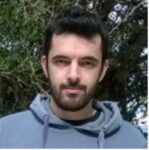 Konstantinos Agathos University of Exeter, UK |
The concept of virtualization, or twinning, has a key beneficial role to play in applications related to diagnosis and prognosis, as defined in Structural Health Monitoring (SHM) or Prognostic Health Management (PHM). Some examples are failure prediction, condition monitoring, or real-time actions to mitigate potentially critical events. At the center of the process lies the assembly of a virtual model from digitized information such as monitoring data coming from the natural system and the output of computational models, which represent the physical system of interest. As a result, the derived virtual assets, or twins, can emulate the true behavior of a physical system in a virtual representation by receiving real-time information to update and adapt themselves along their life cycle. The essence of such virtual representations lies in establishing a two-way, interaction between the physical and digital counterparts, enabling the latter to be probed to assist engineers in decision-making or provide insight into what-if or extreme scenarios for the system of interest. This fusion typically mandates the coupling of high-fidelity models and/or numerical simulations with data extracted from monitored dynamical systems, thus creating the following impasse: Models are essential components; however, the additional computational effort resulting from the requirement for ever-increasing accuracy often compromises efficiency. On the other hand, efficiency and (near) real-time decisions are critical in the SHM context. Thus, this Special Session focuses on demonstrations of frameworks that rely upon evaluations of the said virtual models to assist in decision-making, failure prediction, or other SHM tasks. We specifically encourage physics-guided, physics-encoded and physics-informed surrogate representations or Reduced Order Models that can be used for rapid computation while providing sufficiently accurate response estimates. Special focus will also be given on techniques able to provide real-time inference on the system’s properties and behavior for SHM tasks.
Keywords: Physics-based Reduced Order Models, physics-informed surrogates, data assimilation
S10 – Vibration-based assessment and monitoring for wind energy structures
 Silvia Vettori Siemens Digital Industries Software, Belgium |  Emilio Di Lorenzo Siemens Digital Industries Software, Belgium |
This special session focuses on the application of Operational Modal Analysis (OMA) in the context of wind turbines, being crucial for their structural health monitoring and performance evaluation. The session aims to highlight the numerous benefits of OMA for wind turbine systems, including:
- In-situ Structural Health Monitoring: Facilitating real-time assessments without interrupting turbine operations.
- Identification of structural issues: Detecting excessive vibrations, foundation problems, and potential component failures early on.
- Model validation: Providing critical data to refine and validate numerical models for improved turbine design.
- Understanding local damage effects: Analyzing how localized damage impacts modal parameters to enhance structural integrity knowledge.
In particular, contributions will explore the unique challenges associated with implementing OMA in wind turbines, such as:
- The periodic behavior of turbines due to rotor rotation, which complicates traditional OMA methods.
- The need for specialized techniques to analyze rotating components like blades.
- The importance of distinguishing between structural modes and rotor harmonics for accurate data interpretation.
Keywords: Wind turbine, Damage detection, Structural Health Monitoring, Vibro-diagnostics, Predictive Maintenance
S11 – Bayesian filters for identification and infrastructure monitoring
 Szymon Greś Aalborg University, Denmark |  Konstantinos Tatsis Swiss Data Science Center, Zurich, Switzerland |  Subhamoy Sen IIT Mandi, India | 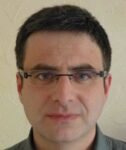 Laurent Mevel Inria, France |
Today’s information-driven structural systems are centered on the collection of large amounts of vibration data, from which countless applications aim at extracting information. Bayesian estimation algorithms such as Kalman and particle filters are used to fuse this sparse data with the models of dynamic systems for their identification and lifespan monitoring. Although these filters are a powerful tool for estimation of dynamic inputs, states and parameters, they show some limitations: e.g., require covariance tuning, are subjected to modeling errors, unknown inputs and possible sensor faults, suffer from numerical issues when dealing with large-scale models and limited sensor network, among others. To enhance Bayesian estimation and overcome application-specific constraints and limitations, in recent years, modern paradigms leveraging machine learning, reduced order modelling and modal models, dynamic substructuring and adaptive filtering are gaining momentum to be embedded in the filter process for its improved performance.
In this session, we solicit contributions related to Bayesian filters for system identification and damage diagnosis, for their usage in SHM related applications. Contributions can be related, but not limited to the following topics:
- Kalman filters and sequential Monte Carlo methods for input-parameter-state estimation
- Identification of disturbance terms in sequential Bayesian inference
- Statistical methods for damage detection, localization and quantification
- Model calibration, model-based uncertainties
- Uncertainty quantification in virtual sensing
- Noise covariance identification and tuning
- ML-enhanced Bayesian techniques
Theoretical work, numerical studies, experimental investigations, and other contributions highlighting the role of Bayesian filters for identification and infrastructure monitoring are all welcome..
Keywords: Bayesian filters, system identification, operational modal analysis, input-parameter-state estimation
Keywords: Wind turbine, Damage detection, Structural Health Monitoring, Vibro-diagnostics, Predictive Maintenance
Industrial session: Innovative Software and Hardware Solutions
The Industrial Session at IOMAC is where cutting-edge research meets commercial applications! This session will highlight real-world applications of Operational Modal Analysis (OMA), demonstrating how specific problems are tackled with innovative software or hardware solutions.
The format is not strict, however, each 10-minute presentation should focus on:
- A defined problem in OMA and its industrial impact,
- The applied methodology and lessons learned,
- Challenges, results, and future perspectives.
Please note: the session is not intended to advertise a commercial product! It’s an opportunity to illustrate how innovations for OMA can help in solving engineering challenges in various industries. Within the session, the IOMAC participants can engage with experts, gain insights from real applications, and discover innovations for their own OMA problems.
This sessions contains oral presentations only, please contact program@iomac2025.com for participation, including the title, the name of the presenter and the affiliation.
